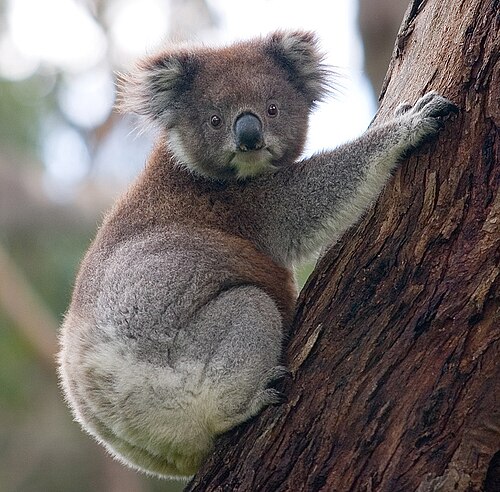 The Wikipedia article of the day for January 1, 2024 is Koala.
The Wikipedia article of the day for January 1, 2024 is Koala.The koala is an arboreal plant-eating marsupial native to Australia, recognised worldwide as a symbol of the country. Its closest living relatives are the wombats. It has a stout, tailless body and large head with round, fluffy ears and a large, dark nose. The koala has a body length of 60 to 85 cm (24 to 33 in) and weighs 4 to 15 kg (9 to 33 lb). Fur colour ranges from silver grey to chocolate brown. Koalas typically inhabit open Eucalyptus woodlands, and the leaves of these trees make up most of their diet. Because this eucalypt diet has low nutritional and caloric content, koalas are largely sedentary and sleep for up to 20 hours a day. They are asocial animals, and bonding only exists between mothers and dependent offspring. They have few natural predators or parasites but are threatened by various pathogens, as well as by bushfires and droughts. The biggest threat to their existence is habitat destruction due to agriculture and urbanisation.
